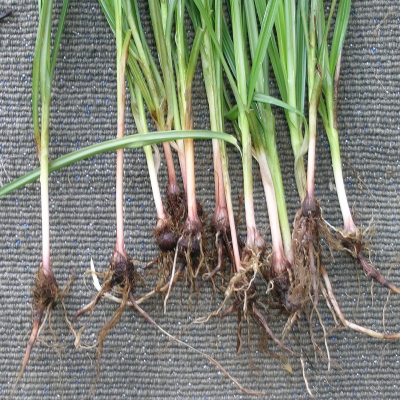Cyperus rotundus Linn.
Family : Cyperaceae
Group : Anti hypertensive, Anti-arthritic/anti-rheumatic/anti-inflammatory, Stomach disorders/carminatives/laxative
Parts Used : Bulbous tuber
Vernacular Names :-
| English | : | Nut grass |
| Malayalam | : | Muthanga |
| Hindi | : | Nagarmotha |
| Sanskrit | : | Musta |
| Bengali | : | Motha |
| Gujarathi | : | Motha |
| Kannada | : | Tungegadde |
| Tamil | : | Kora |
| Telungu | : | Tungmuste |
Distribution and habitat: Throughout India, common in waste grounds and gardens.
Botany: A small sedge, 10-16 cm in height; stolons slender, 10-12 cm, thickened in to black woody ovoid tuberous; aerial stem triquetrous at top.
- Leaves: Tristichous, long , finely acuminate, flat, one nerved, often overtopping the stem, 0.4-0.8 cm broad.
- Inflorescence: Umbels frequently compound, primary rays 5-20 cm.
Properties: Anti-inflammatory, antipyretic, analgesic
Chemical constituents:
- Cyperene-1 and cyperene-2, cyperotundone from tubers.
- Cyperene, β-selinene, cyperenone, and α-cyperone, from rhizomes.
- Essential oil contains mustakone.
- Root extract possessed tranquillizing activity. It showed antipyretic and anti-inflammatory activities.
Formulations: Mustharishtam, Mustakadi churnum
Uses: It is used in Diarrhea, dysentery, dyspepsia, vomiting, cholera, and fever. Root paste is applied to wounds, sores etc. and used in intestinal disease.
Propagation: Vegetatively by tuber.

